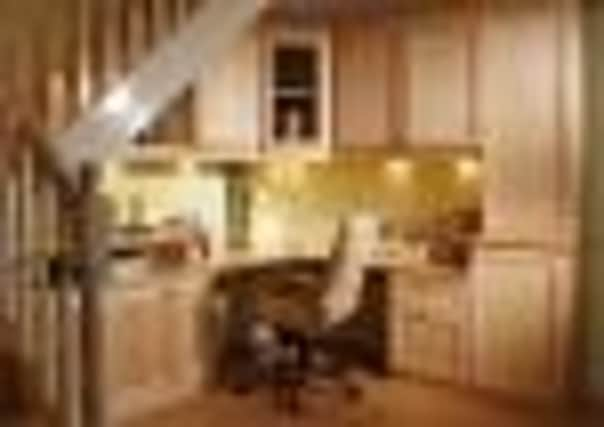Making an entrance


When it comes to stylish interiors, halls and landings are probably the most overlooked.
But unused space in a hallway or landing could be transformed into a useful functional area, or simply embraced as an opportunity to display art, family photos, or to store your keys and coats in style.
Advertisement
Hide AdAdvertisement
Hide AdFirst impressions count, and your hallway will set the tone when you or guests enter through your front door.
Alan Hughes, faculty director in architectural interior design at the Inchbald School of Design, says: “You want to feel welcomed, received back to the security of your own zone, and guests need to know whose house they are in and that they are welcome too.
“Hallways are transitional spaces so you remain in them less - this gives you a chance to be bold and experiment.”
An easy place to start is by thinking about colour and texture. Your approach to these will vary depending on whether you want to achieve a sleek, contemporary look, or whether you’d prefer a softer, more traditional, homely feel.
Advertisement
Hide AdAdvertisement
Hide Ad“Vibrant and warm colours are welcoming,” says Hughes. “Dramatic colours can look jewel-like as a door opens, which is a great encouragement to enter.”
Carpets went out of fashion for a while, as everybody preferred the sleeker, easy-care appeal of wood and laminate flooring, but they’ve been enjoying a comeback of late.
Choosing a carpet will certainly help you achieve a ‘warm welcome’, as soft textures are instantly inviting. Also, a splash of texture and colour can be the perfect offset to clinical, minimalist walls.
The other options are wood flooring or tiles. Real hardwood flooring can be expensive. But it’s a timeless look that will never go out of fashion. Consider reclaimed timber sourced from your local area: good for the environment and easier on your pocket.
Advertisement
Hide AdAdvertisement
Hide AdTiling is a traditional option for hallway floors. Clean, neutral tiles work brilliantly for that minimalist, contemporary look (perhaps consider a colourful rug to break things up). But this is somewhere you could achieve something stunning too, with beautiful, patterned antique-style tiles.
Texture isn’t limited to floors; it can be achieved on walls too.
Wallpapers are one option, and there are endless designs on offer nowadays, but a great option for hallways, stairs and landings is panelling.
Installing panelling is a simple way to breathe new life into this part of the home. It provides a blank canvas for any colour scheme and a quick way to create interest and impact.
Advertisement
Hide AdAdvertisement
Hide AdHow you use your hall will determine the furniture to include in it.
“I need a dish for my keys and loose change, which I always take out of my pockets as soon as I get home,” says Hughes.
“An oak chest under the stairs hides clutter and is a good shelf for briefcases and school bags. We use a very large glass punch bowl to keep scarves, gloves and hats neat and tidy, but easy to see.
“Keep furniture to a minimum; adapt radiator covers to house umbrellas and key space.”
Advertisement
Hide AdAdvertisement
Hide AdMirrors can also help create the illusion of added space and depth, and it’s always handy to position one near your front door so you can check your reflection quickly before heading out!
If space is limited but you still need storage for shoes and coats, compact shelving, hooks and shoe racks will help keep the area tidy.
If you have sufficient space, why not look at creating a mini home office area? Even placing a desk on a landing could make a vast difference, providing the perfect answer to space dilemmas elsewhere in the house.
Unused space under the stairs, or at the tops of landings, could be turned into stylish studies or library areas, with shelving and even some comfy seating.